Shed antler hunting seems to get more popular every year and so are on the increase the social media posts on monster sheds everyone seems to find.
If you are one of those who has not found any sheds in recent seasons and you don’t want to go through another empty year suffering from shed-envy, then I got some great news from you.
I contacted various hunting bloggers, TV personalities, magazines and asked them this question:
What are your top 3 shed hunting tips for those who haven’t had much shed-hunting success in past years?
I received a total of 25 answers, and there were some major commonalities between the answers.
So the most important rules to follow for shed-hunting success are:
1. Look where the deer are and where it might be seeking shelter: bottomlands, softwood cover, south-facing slopes, bedding and feeding areas, heavy brush.
2. Look at places where antlers might get knocked loose: game trails that cross fence lines, streams or other obstacles.
3. Improve your vision. Use binoculars, polarized sunglasses, or bring kids, family, or friends (great way to introduce your kids to hunting).
Now that you are aware of the basics continue to read or scan through all the 25 answer below, some of these will certainly have little tips & tricks you would never have thought of.
Before you start shed hunting you should also take a look at our Shed Hunting Laws and Restrictions By State interactive map, to make sure you are not breaking your state laws.
RELATED: Does It Hurt When Deer Shed Their Antlers?
Adam Crews – Chase The Mountain
1. If you live in the South — Don’t start too soon. Most of our bucks are still carrying their antlers into February and March.
2. Bring some type of optics. Sometimes it’s easier to let your eyes do the work.
3. Use your kids! This is the perfect time to get your family involved in the outdoors, and it puts more eyes on the ground.
AJ Gall – Legendary Whitetails
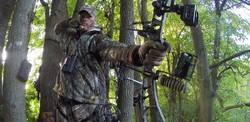
1. Search quality (over quantity) – Feeding areas should be your go-to #1 shed searching spots, with bedding areas (think thick and nasty) a very close second. These are simply the areas deer spend the most time, therefore, the most likely places antlers will fall off…it’s all about probability.
2. It’s a marathon, not a sprint – If you want to find a decent number of sheds, you’re going to have to work for them. I’ve gone on 20+ mile dry spells even in the heart of deer country (Iowa). Keep your head up (or maybe down?) and keep walking, eventually it’ll pay off. Plus, it’s never a bad time to scout. Miles=Piles
3. Bring binoculars – There’s a lot of stuff that looks like antlers out in the woods. Quickly pulling up your binoculars will help you verify from a distance if it’s just a corn stalk or in fact an antler.
Bob Humphrey – bobhumphrey.com
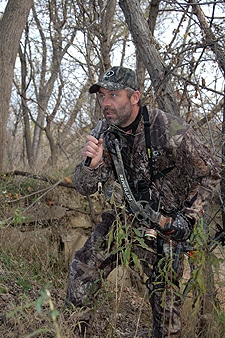
1. Concentrate your efforts in areas of winter deer concentration. In snow country it’s easier, but look for places where deer are protected from the elements, like bottomlands, dense softwood cover or south-facing slopes.
2. Focus on fence lines, stream crossings or other places where deer have to jump, and the jolt of landing may jar antlers loose.
3. Bring a dog. Even one not specifically trained to find antlers will be able to sniff out the ones you may miss.
Brandon Gador – Quiver Hunting App
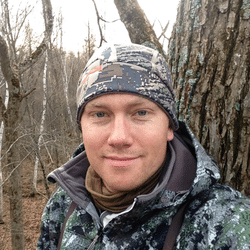
1. When out looking for sheds, you want to focus your efforts on areas where deer frequent the most. This time of year, deer spend most of their time in bedding and feeding areas. Hit the edges of food plots and cut crops as well as thick bedding areas. Hit the hot spots first!
2. The aspect of the areas you target is also an important factor to consider looking for white gold. You want to focus on pieces of land that face south and east. These aspects receive the most sunlight this time of year, and it’s where you can expect to find the most traffic from deer.
3. Lastly, prepare for the day and pack accordingly because you’ll be covering a lot of ground. Make sure you have a solid pair of hunting boots to keep them warm and dry and pack the necessary layers for trekking allover the place.
Carl Drake – Hunters Specialties

#3. Keep an eye your trail cameras to see if your deer have lost their antlers and when. I have known some of my bigger deer to hold onto their antlers all the way up to the 1st of March. It also helps if you’re trying to find a specific deers sheds.
#2. I like to look for sheds on heavily worn trails and especially where deer have to jump over and cross fences or jump obsticals. Sometimes just this action causes a deer’s antlers to fall off or even loosen up.
#1. I would say hands down I find most of my sheds in feeding areas especially large fields. If you have food plots or cut corn fields or Bean fields where deer are heavily concentrated to feed in the evenings this would be my number one place to look for sheds because this is where I find most of my deer especially late in the year spending most of their time. So concentrate on these areas and I promise you you’ll be able to come home with more antlers in the back of your truck!
Dan Schmidt – Deer & Deer Hunting
You can find Dan on Twitter, Facebook, Instagram.
1. Don’t start too soon. This especially holds true for guys and gals who have limited property in which to look for sheds. This really hasn’t been that tough of a winter, overall, in most areas. A good number of bucks, especially mature bucks are still carrying their headgear. If you run out there and start looking now, especially in areas with good food sources, you run the risk of spooking them from the property at least momentarily, which might mean they’ll stay on the neighbor’s ground and drop their antlers there.
2. When you do go shed hunting, start your search on lee sides of hills and in bedding areas that have a southern exposure. Deer seek warmth during these cold months of February and March, and bucks often drop their antlers in these warmer pockets.
3. Look beyond the obvious areas. Food sources are great — food plots, farm fields, open field edges — but they are also not the areas where deer spend most of their time. Excellent areas for finding sheds are the thicker cover, especially in areas with evergreens. Pine, spruce and hemlock stands are oftentimes hot spots for finding sheds. Take your time when looking in these areas, and be sure to get down and look under the canopy right up against the tree trunks. Big bucks love these spots when seeking shelter from winter’s harsh weather.
Darren Choate – Western Whitetail

The great thing about looking for shed antlers in the West is that in most places, you will likely be in an area where there are more than one species of animals that shed their antlers. Where I reside—Arizona—that list may include elk, mule deer, and Coues deer. That said, I am usually focused on one species on any given trip.
Here are three tips for your upcoming shed season.
1. Ultimately, I find more antlers on the second half of my trip—on the way back to the truck. The point, don’t get discouraged if you aren’t picking up antlers right away; keep going, and soon enough you’ll be in the right area.
2. I always where polarized sunglasses. Although I walk through shady areas more than sunny ones, I find a good pair of sunglasses aids in seeing sheds no matter the lighting.
3. If you get the chance to look for Coues shed antlers specifically, remember they are tiny and you have to look hard—search in the brush, zig and zag when you know you are in potential Coues shed country.
Drury Outdoors – druryoutdoors.com
1. Don’t start looking too early. Most of them aren’t fully shed until early March.
2. Check south facing hill sides where deer like to bed.
3. Make sure you have good foot wear. You’ll be putting some miles on those feet!
Gary Lewis – Gary Lewis Outdoors
1. Bring a dog. It doesn’t need to be a shed hunting dog. Once Fido figures out what you’re up to, he might develop a nose for the game too.
2. Bring binoculars. Find a spot to sit down, then glass opposing hillsides. Pay particular attention to the downhill side of deer trails and fence crossings. Look under trees where antlers are sometimes bumped against low-hanging branches.
3. Don’t park in the same place you parked last time. Force yourself to walk other routes and see your canyons and benches from different angles.
4. Mark each spot you find an antler with a GPS waypoint and return to those spots next year.
5. Train your eyes to look for the smaller spikes and fork horn sheds that we often miss. Some of my favorite finds are the smallest ones.
James G. william – huntingkentuckydeer.com
There are no super secret tricks needed to be good at hunting sheds. The three best tips I can give to a person new to hunting deer will make you 95%+ of that of a professional.
#1) Bring Friends/Kids/Family – Whatever your reason for wanting sheds, there are always people at all ages willing to walk the woods or food plots looking for treasure! It’s not an activity that requires special training or to be in Olympic level shape to participate in.
#2) Get a pair of sunglasses – Horns refract light different to that of vegetation. Get a some antlers and stick them in your yard. Look at them through the different sunglasses you have. Figure out which pair makes the horns stick out the most and use them. You’d be surprised how much sheds can stick out by wearing the right pair of glasses.
#3) Probably most importantly, you need to look for sheds where there are deer. Whether it’s a farmer willing to let you drive across his fields in a side-by-side or you’re paying an outfitter $250 to go out for a few days and look for sheds, these are two great places to start.
Jay Jensen – Easton Hunting
1. Shed hunting is not a lot different than hunting the actual game. Using some of the same tracking skills you would use during hunting season is crucial. Look for tracks, bedding areas find out where they are eating. You’ll want to search those areas extra close.
2. Walk along game trails. You’re going to have more success being in the places you know the animals have been.
3. Look for game trails that cross fences or obstacles. Jumping and landing will have an knock antlers loose.
Jay Scott – Big Buck Registry

1. You’ll never find a shed sitting on a couch. Get outside and go for a walk, get some exercise and do some scouting along the way. Coming from the northeast, specifically my area of the northeast, the snow tends to get a deep so waiting for late February is a great time to start shed hunting (after the snow melts a bit and exposes the antlers). Walking in deep snow is outstanding exercise. And the travel patterns that the snow reveals could be very useful info when the bow season comes around.
2. South facing slopes are key in northern mountainous regions. Most of the deer yard up in my neck of the woods in the winter, so it can be obvious where a huge number of deer are hanging out. But sometimes not so obvious if the yard is composed of a smaller numbers of deer. Regardless of the size of the herd in the yard, keying in on south facing slopes of mountains and ridges will be where the majority of the deer will hangout during the winter for the warmth of the sun. Pull up Google maps and find the south facing slopes in your area, then ground check it for lots of tracks. It may take time to scour the ground and you may want to call in a shed dog, but here’s bound to be a good antler there somewhere.
3. Look for ice bridges. These won’t be obvious until March as the snow melts, but these can be key and shows where the runs in an out of deer yards were. The ice bridges aren’t really bridges, but rather paths where the snow beaten trails have turned to ice in high deer traffic areas. This is a big find when the snow has melted so far down that the yards aren’t obvious anymore. Follow those trails. It’ll either lead you to south facing slope or the buck may have dropped a shed along the way.
Jerry Tibbott – The Bearded Buck
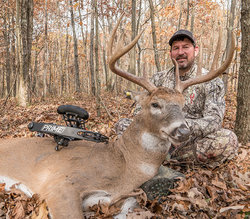
1) I would rather thoroughly look at 20 acres than try and walk 300 acres In a day. Try and not let your eyes wander too far out in front of you. I have seen guys walk right past sheds at their feet because they want to be the guy to see the giant shed in the field way out in front of them. Stay focused and set up small grids and cover the entire 20 acres before moving on.
2) Don’t assume that if you checked a section of property that you found every shed the first trip or that every buck in that area had shed their antlers at that point. Remember they don’t all drop at the same time.
3) The old adage that “Patience is a Virtue” I can’t stress enough to decided when to shed hunt your farm based on your own personal observations not on what you are seeing on social media. If you aren’t able to check trail cameras or be on the property to observe the deer in person I would error on the side of caution and wait an extra week….or two….past when you think it’s time to start looking. There is nothing wrong with picking up sheds in spring turkey season…..good luck to you all!
Jim Shockey – jimshockey.com
Joe Shead – goshedhunting.com
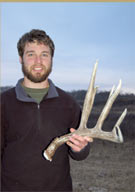
1. Look for south-facing features, whether it’s the south face of a hill, the southern edge of a woods along a farm field or even the south side of a single tree. This area receives the most direct sunlight, which warms deer in winter. It also melts the snow, making it easier to find food.
2. Look for lone evergreens, whether it’s a single cedar in a pasture or just a few random pines in a hardwood forest. Deer will go out of their way to bed under these odd features on the landscape.
3. Scout ahead of the season so you know where deer are. Drive the backroads at night to see which fields deer are using. Observe tracks in mud or snow. Deer may shift to new areas in winter. Make sure you are shed hunting where deer were when they were dropping their antlers. Once you’ve found the X, stay in the area. It’s not about putting on the most miles, it’s about putting on the right miles.
Joe is author of an only shed hunting book I’m aware of called – Shed Hunting-A Guide To Finding White-Tailed Deer Antlers
John Stallone – johnstallone.me
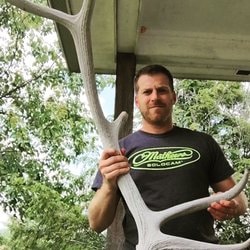
1) When you don’t have time to scout what are some of the things you look for when choosing a shed hunting area? That’s a broad question with so many answers I generally have an idea about the country/state I’m in and what it has to offer for big game. A lot of guys don’t realize the similarities of hunting & shed hunting you need to find ample food, water, and cover the animals need for the time of year leading up to when they will shed.
2) Where is your starting point? Meaning when you are going into a new area that you have never been before and you only have a limited to hunt for horns where do you begin? Google Earth I am looking for elevation and good feed if its country that gets a fair amount of snow elevation is key. Country like Az is different Feed and water are king. Its pretty simple figure out what they need and look for it. talk to your local biologists and ask if there are migrations or wintering grounds. Ask what the animals prefer to eat during that time of year.
3) What structural and/or landscape features do you look for in a unit to focus your efforts? I look for a lot of country that has good wind breaks and natural funnels lots of “rolley” county at certain elevations that allow the animal to be up feeding anytime of the day without being pressured and out of the wind but still have good cover to bed in either in the sun or shade elk & deer are different.
4) What would you suggest to someone to improve their shed hunting success? A combination of things like scout find out where the animals are at starting in February clear till May if there not there nothing will work. stay within the elevation either deer or elk hang out in you will find them in all ranges but the vast majority stay in certain zones deer I like 5500-6200 Elk 6900-7500. Put down the miles and glass where you can!
Check out John’s podcast on shed hunting with one of the best in the business Josh Corbin.
Ken Nordberg – drnordbergondeerhunting.com
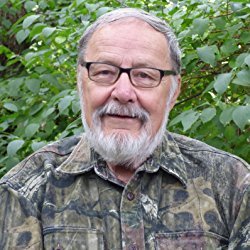
Though I’ve never been enthusiastic about hunting for sheds, my wife loved to hunt for whitetail (& moose) sheds in or near our northern Minnesota whitetail study area. Our best sites to find deer sheds (before she died) were a couple of whitetail wintering areas in early spring before leaves began growing and before mice and squirrels had chewed sheds extensively – also the easiest time to see them.
Our dominant breeding bucks with the largest antlers generally shed their antlers before other deer, typically a few days before all our deer suddenly migrated to wintering areas, some traveling six miles or more, a few days before Christmas. Shed antlers of our biggest bucks were therefore usually scattered almost anywhere within their individual square-mile home or breeding ranges, making them much more difficult to find.
Some wintering areas are small (a few acres in size), used by 2–3 dozen deer, or large (miles long and wide), used by hundreds of deer. We always had our best luck in small wintering areas, finding all sizes of sheds from spikes to eight-pointers but rarely the largest antlers. Our wintering areas are dense stands of evergreens close to water with with plenty of favorite browse within or next to them. In spring they are full of well-worn deer trails and deer droppings (but no deer) and red osiers and mountain maples with all their upper branches chewed off. Lakeshore wintering areas are characterized by browse lines – greenery of white cedars chewed off at the same level over notable distances.
For 18 years we spent 3-4 winter months in Texas, New Mexico and Arizona where we occasionally searched for sheds as well (no snow on the ground). Dense stands of timber being limited, we keyed on dense timber where whitetails bedded (lots of beds found in grass) and often found sheds of all sizes in such places, even some from obviously large bucks. Wooded areas around watering spots were also good. Both sheds of some bucks were often in sight of one another. After watching one big dominant breeding buck knock off its remaining antler on a tree trunk one evening, we spent two days trying to find the other one, with no luck.
For some reason, it takes time before your eyes begin seeing sheds. Some I found early only because I stepped on them. Another I found after sitting on it where Jene and I decided to eat our picnic lunch. After a day or two of searching, you suddenly start spotting sheds everywhere, even in areas where you searched diligently the day before. Some people spot more of them than others. My wife always happily found two to every one I found.
My wife used some to make rustic wooden curtain rod holders for my office and drawer pulls for my desk. She also made buttons out of some for jackets. One of our sheds has been a handle on a friend’s lake cabin outhouse for years. I gave several away to hunters asking for pairs to use as rattling antlers and some to a friend who used them to make handles for hunting knives. I even made a fair-sounding grunt call out of one (although bucks might not agree). A local taxidermist also pays me money for decent antlers I find, used in various ways for mounts. The owner of a antique store up north is also aways anxious to buy some too, especially matched pairs. It’s a good thing people have needs for them. Otherwise I’d have boxes of shed cluttering my garage today.
Happy shed hunting everyone,
Dr. Ken Nordberg
Mark Kayser – markkayser.com
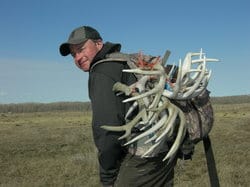
1. USE OPTICS. Use optics to scan far hillsides, valleys and broad flats for signs of glistening antlers. High points such as ridges, hills or banks provide elevation to look down into cover. Horseback also gives you an elevated perch to look down into high grass or brush to spot veiled antlers. Whether I’m in thick brush or open country, I use my Nikon Monarch 7 10×42 binocular(nikonsportoptics.com) to find 25 percent or more of my antlers.
2.GO DEEP. Although the bulk of shed antlers will be near traditional locations such as high-energy food or south-facing slopes, mature animals don’t always follow the crowd. Trophy animals detach themselves from the herd much of the year and winter is no exception. Look for out-of-the-way micro environments offering isolation, thick cover and a nearby food source for the biggest sheds. I consistently dive into thick briars and steep coulees that most avoid to find extra prize antlers. Putting on lots of miles in this terrain also means keeping your feet happy. I do that by wearing quality boots like Cabela’s Meindl Perfect Hunter boots (www.cabelas.com)..
3. GRID YOUR SEARCH. To cover an area thoroughly mentally grid the location and crisscross it with swaths wide enough where you can see your last track. Biodegradable fluorescent tape can aid in searching an area systematically and keeping you on a straight-line path or making notes on your smartphone utilizing popular hunting apps such as ScoutLook Weather (www.scoutlookweather.com). Cover a good area thoroughly and you won’t miss any hidden antlers.
Mike Hanback – mikehanback.com
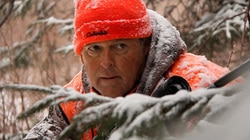
1. Don’t just start hiking and hunting, but make sure you look where the deer are. As a rule 90 percent of the deer congregate in 10% of the woods/brushy habitat this time of year, so narrow down your search areas.
2. If you see 10 or 15 deer feeding and hanging around in a field now, some sheds are going to be there, or close. Prime food sources to check: 1) a bean field where some pods are still on the ground; 2) thick, scrubby fields, with green shrubs and berries; 3) alfalfa, clover or winter wheat.
3. Most of the best shedding is done in and around food sources and nearby staging areas, and from there branch out toward bedding areas. Hunt the connecting trails between feed and bed too.
Mike Roux – mikeroux.com
Tip #1 Check well used trails that have fence or ditch crossing where bucks have to jump to get across. Landing spots like these can jar loose antler off.
Tip #2 Check trails that go through heavy brush. Often this brush will break loose antlers.
Tip #3 Check you best spots often. Don’t walk through your property one time and call it quits. Walk your spots once or twice a week, and hunt for coyotes and scout for turkeys at the same time.
Richard P. Smith – richardpsmith.com
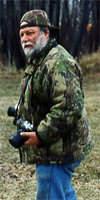
The best way I find shed antlers is to monitor bucks in my area during the winter. As soon as I see that a buck has lost one or both antlers, I start looking for sheds along deer trails, feeding and bedding areas. One winter, I found an antler that had just been dropped by a bird feeder. I then saw the buck and confirmed he had lost both antlers. There was fresh snow on the ground, so I found the buck’s tracks and backtracked him a half mile to his bed, where the other shed antler was.
Another winter, I found an antler that had just been dropped. I then located the buck that lost the antler and kept an eye on him. An hour later, he lost the remaining antler and I retrieved the antler where it fell off.
On yet another occasion when I was photographing an antlered buck during the winter, one of his antlers fell off when he jerked his head up while eating. After the buck walked away, I went to where the antler fell off and grabbed it!
Ryan Lisson – Zero To Hunt
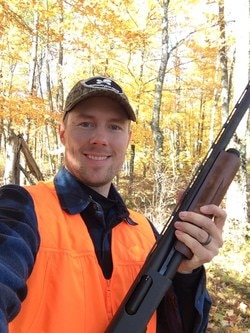
1. First, manage your expectations. If you haven’t been successful before despite your efforts, maybe you’re in a highly pressured area. The most convenient spot for me to shed hunt is right across the road in a public park. I’ve found a few decent ones over the years, but I’m by no means the only one out there looking for them. Likewise, if you’re in an area with a lot of hunting pressure, you might not have many bucks, especially mature ones, to shed noticeable antlers. You can’t find something that’s not there.
2. Slow. Down. I think that most people (myself included) tend to move far too fast while shed hunting. While walking along a deer trail or wandering through a bedding area, really force yourself to stop occasionally and systematically scan your surroundings. When you’re done doing that, bend or kneel down and look at things from a different perspective. Focus your efforts around obstacles in the trail, deer beds, or throughout food plots.
3. Calibrate your eyes. It might seem silly, but bring a shed antler with you the next time you go. At the beginning of the search, toss your antler out onto the ground and scan your eyes across it. Sometimes seeing an antler profile buried in the snow and leaves can help train your mind on what you should search for. It’s why finding morel mushrooms always seems to get easier after you’ve seen one. Also, try to keep the sun in front of you, which will produce a slight glare off newer shed antlers and help them stick out better.
Scott Haugen – scotthaugen.com
1. Use trail cameras to monitor when sheds drop in your area, then go look for them ASAP, before coyotes or fox find them.
2. Get a hunting dog and train it to find sheds.
3. Keep at it and work close to a buck’s core wintering area. Don’t go in too early on migratory deer & be aware of laws that me be in affect in such areas.
Steve Phelps – Illinois Trophy Bowhunters
1. Every 20 yards, stop and look behind you. Some antlers will be somewhat camouflaged in one direction, but easily seen after you look back.
2. When you find an antler, circle it every 15 yards in opposite directions about 4 times to find the other side.
3. In areas where others look, start at daylight. Beat them to them!
Steve Sorensen – Everyday Hunter
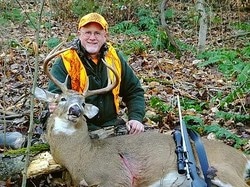
1. Feeding areas are generally the most productive spots. When deer eat they’ll often lay down for an hour or so under an apple tree, along a hedgerow, or just inside the woods, and then get up to feed again. That means they’ll occupy these areas a little longer than you might think.
2. During the winter, northern whitetails are seeking warmth, so search on eastern and southern exposures—especially in areas with thermal cover. The snow isn’t as deep under pines and hemlocks, so deer use less energy there.
3. When looking over an area—any area—don’t just look ahead of you. Look behind you, too. Often, when you see an antler from a different perspective, you’ll recognize the distinctive curve or the white contrast better. Do this, and you’ll probably increase the number of antlers you find by 25%.

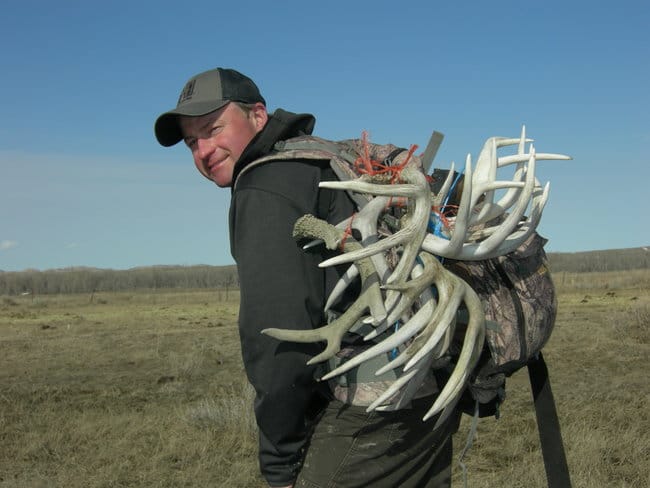
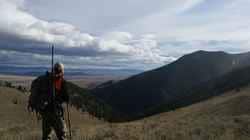
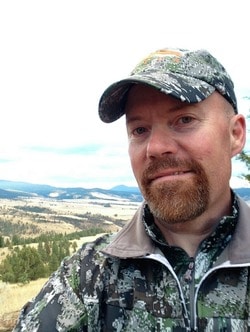
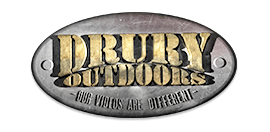
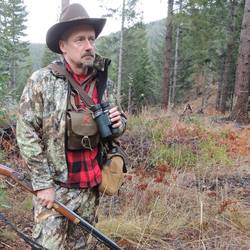


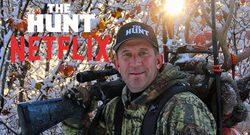
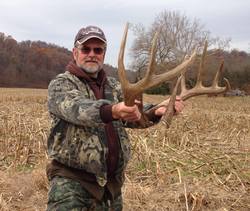
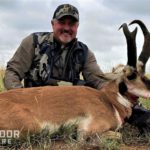
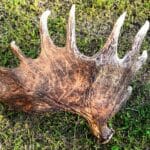
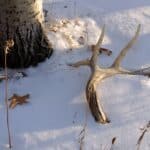
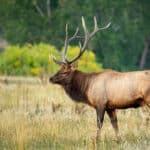
Comments are closed.